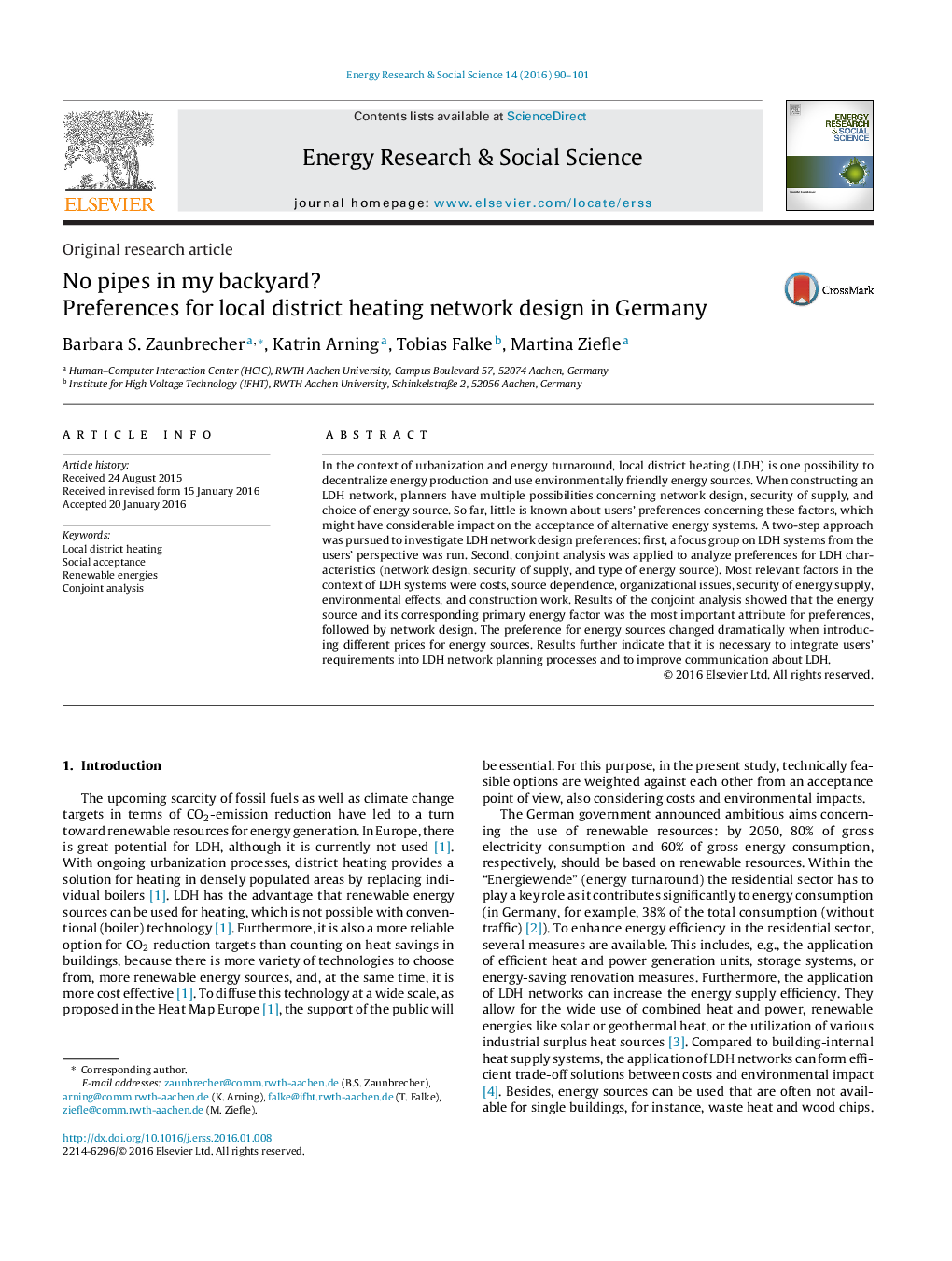| Article ID | Journal | Published Year | Pages | File Type |
|---|---|---|---|---|
| 6558186 | Energy Research & Social Science | 2016 | 12 Pages |
Abstract
In the context of urbanization and energy turnaround, local district heating (LDH) is one possibility to decentralize energy production and use environmentally friendly energy sources. When constructing an LDH network, planners have multiple possibilities concerning network design, security of supply, and choice of energy source. So far, little is known about users' preferences concerning these factors, which might have considerable impact on the acceptance of alternative energy systems. A two-step approach was pursued to investigate LDH network design preferences: first, a focus group on LDH systems from the users' perspective was run. Second, conjoint analysis was applied to analyze preferences for LDH characteristics (network design, security of supply, and type of energy source). Most relevant factors in the context of LDH systems were costs, source dependence, organizational issues, security of energy supply, environmental effects, and construction work. Results of the conjoint analysis showed that the energy source and its corresponding primary energy factor was the most important attribute for preferences, followed by network design. The preference for energy sources changed dramatically when introducing different prices for energy sources. Results further indicate that it is necessary to integrate users' requirements into LDH network planning processes and to improve communication about LDH.
Related Topics
Physical Sciences and Engineering
Energy
Energy (General)
Authors
Barbara S. Zaunbrecher, Katrin Arning, Tobias Falke, Martina Ziefle,
